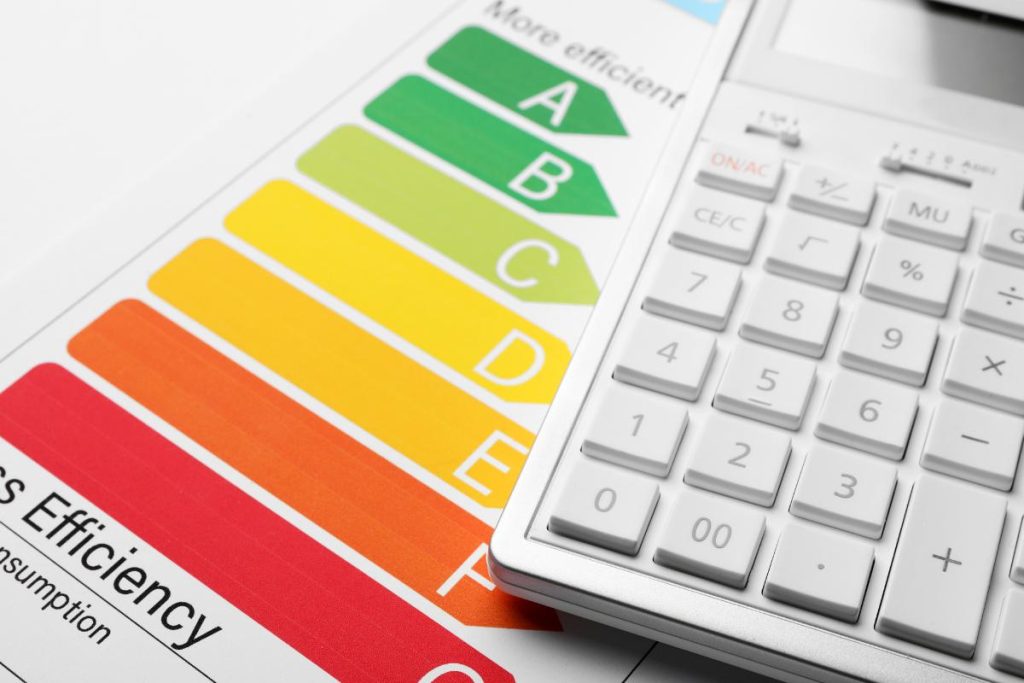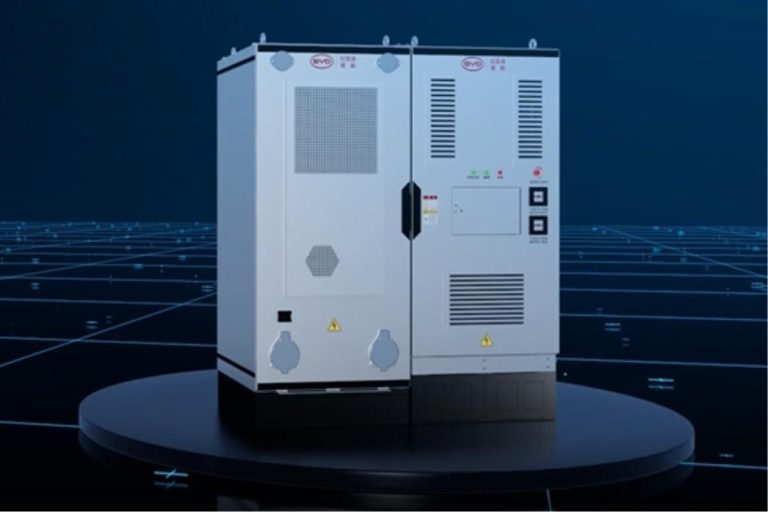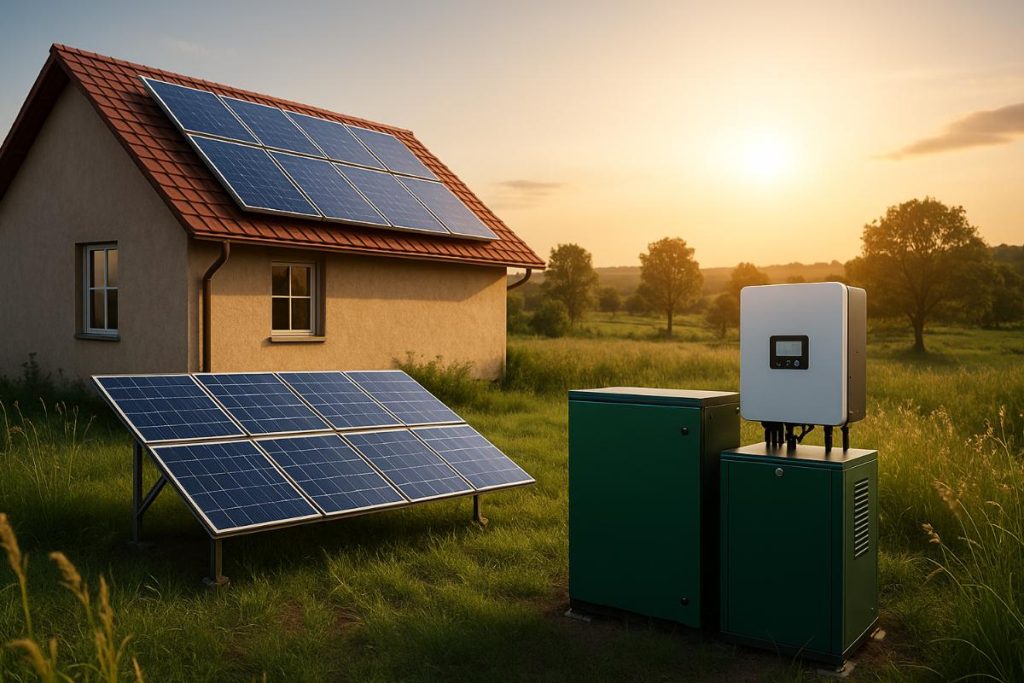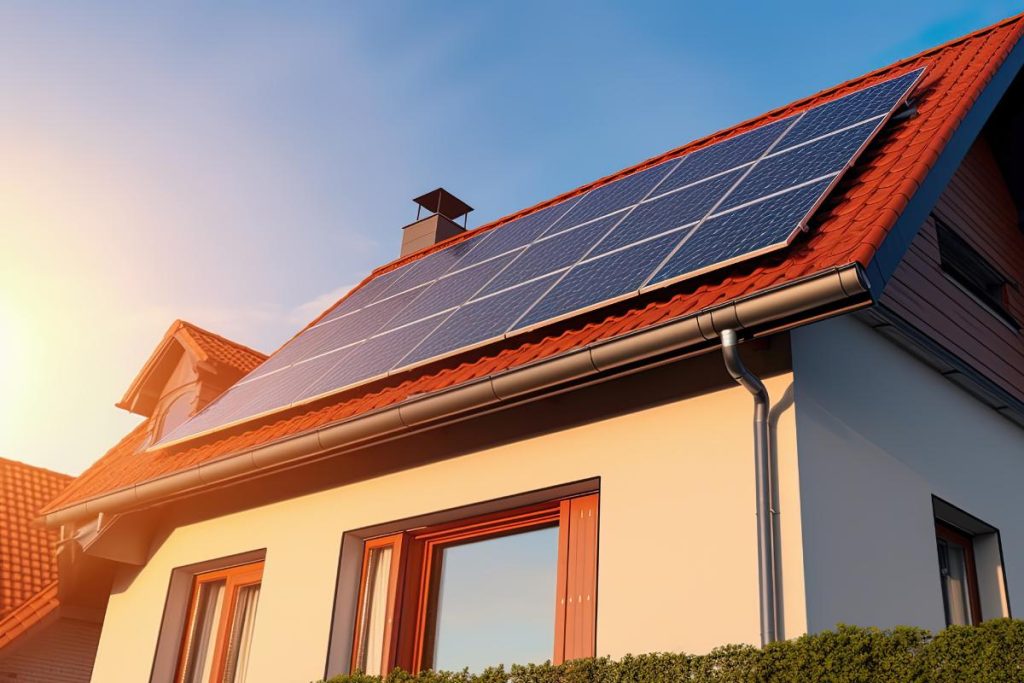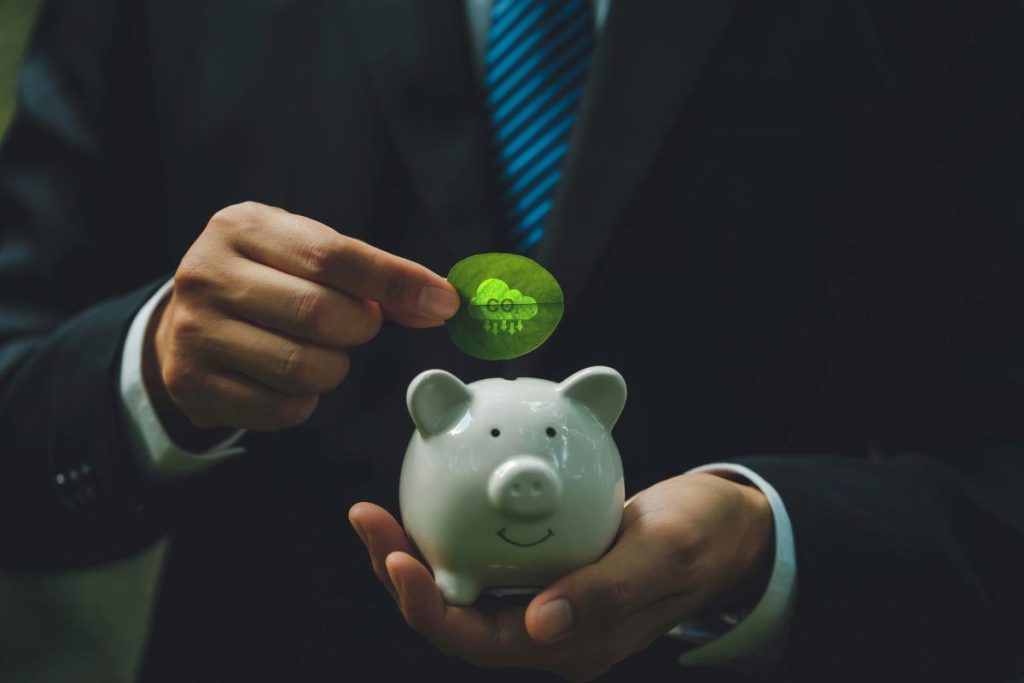Understanding the calculating energy consumption is essential for any person or company who wants to control their spending, identify waste and make conscious decisions about electricity use.
With the growing search for economical and sustainable alternatives, such as solar energy, understanding how to calculate electricity consumption allows you to plan efficient solutions that reduce costs and have a positive impact on the environment.
In this article, you'll learn how to make this calculation in different contexts, identify the main villains of consumption, and find out how BYD Energy do Brasil can be your partner in the transition to a clean and intelligent energy matrix.
Why is understanding the calculation of energy consumption essential?
Understanding how to calculate electricity consumption goes far beyond simply reading the electricity bill. This knowledge is valid so that homes, businesses and industries can control their spending, avoid waste and make smart decisions that impact both their pockets and the environment.
By mastering the calculation of consumption, you can identify opportunities for savings, plan investments in energy efficiency and even consider adopting renewable solutions, such as solar energy, which contribute to a more sustainable and economical future.
Impact on the monthly budget
Electricity consumption is one of the fixed costs that weighs most heavily on household and business budgets. By understanding the calculating energy consumptionIn this way, you can identify exactly how much each appliance consumes, avoiding surprises on your electricity bill and enabling you to manage your finances more efficiently. Controlling energy consumption allows you to plan the use of appliances, reduce expenses and invest in solutions that bring economic returns.
Sustainability and conscious use
More than saving money, controlling energy consumption is directly linked to sustainability. The conscious use of electricity helps to reduce the demand for non-renewable sources and reduces greenhouse gas emissions. Energy awareness promotes responsible behavior that is in line with sustainable practices. sustainable energy solutions essential to preserve the environment.
Planning more efficient solutions
Mastering the calculation of consumption is the first step in planning efficient energy alternatives, such as the adoption of photovoltaic systems. Knowing how much you consume allows you to correctly size your solar energy system and storageensuring maximum use and return on investment. Conscious consumption thus becomes an ally of clean generation and energy autonomy.
How is electricity consumption calculated?
Know how to calculate electricity consumption helps not only to understand how the system works, but also to identify exactly how much each piece of equipment affects the total spend.
This knowledge enables more precise control, facilitates the analysis of electricity bills and helps in making decisions to optimize energy use. Below we present the basic concepts and the formula used to carry out this calculation in a simple and practical way.
Basic formula (Power x Time of use x Days / 1000)
Consumption in kilowatt-hours (kWh) can be calculated using the formula:
Consumption (kWh) = Power (W) × Time of use (h) × Days / 1000
Where:
- Power (W) is the power of the appliance, usually indicated on the label;
- Usage time (h) is the number of hours the equipment is on per day;
- Days is the number of days in the period considered, usually a month.
For example, a 1000W appliance used 3 hours a day for 30 days consumes:
1000 × 3 × 30 / 1000 = 90 kWh
What kWh means and how to interpret it
The kilowatt-hour (kWh) is the unit of measurement that represents the energy consumed. One kWh is equivalent to the consumption of 1000 watts during one hour. In practice, the electricity bill shows the total consumption in kWh and the tariff applied to this amount determines the amount to be paid.
Difference between voltage, current and power
- Voltage (V): force that drives the electric current, measured in volts;
- Current (A): the flow of electrons through a circuit, measured in amperes;
- Power (W): amount of energy consumed per second, the result of multiplying voltage by current.
Power indicates the instantaneous consumption of the appliance and is the basis for calculating total consumption.
How do you identify the biggest villains in energy consumption?
In order to control and reduce electricity consumption, it's good to know which appliances and habits are most responsible for high expenditure. Hidden or unnecessary consumption can often go unnoticed, damaging the budget and energy efficiency.
We will now present the main equipment and factors that influence consumption, allowing you to make an accurate diagnosis and take effective measures to save energy.
Equipment that consumes more energy (shower, air conditioning, etc.)
Knowing which equipment consumes the most helps you focus on actions to reduce costs. Certain appliances are known for their high consumption, such as:
- electric shower: can consume between 3000 and 7500W;
- air conditioning: varies from 1000 to 5000W depending on capacity;
- refrigerator: constant consumption due to the compressor;
- washing machines, dryers and electric ovens.
Standby appliances: hidden consumption
Many devices continue to consume energy even when switched off, because they are in standby mode - TVs, chargers and electronic devices are great examples. Although their individual consumption is low, together they can account for up to 10% of the bill.
Seasonality and usage habits
Consumption varies according to the season and people's habits: the use of heaters in winter or fans in summer has a direct impact on monthly expenditure. Therefore, analyzing this variation helps you plan your consumption and adapt your energy use.
Practical examples of calculating consumption (residential, commercial, industrial)
Understanding energy consumption in different contexts is fundamental to applying the calculating energy consumption effectively and identify real savings opportunities.
Residence
In a typical middle-class home, monthly consumption usually varies between 150 and 300 kWh, depending on the number of residents, usage habits and equipment installed. The main consumers are:
- refrigerator: equipment that operates 24 hours a day, with an average consumption of between 30 and 60 kWh/month;
- lighting: varies according to the type of bulbs (LED, fluorescent, incandescent) and time of use, and can account for up to 20% of total consumption;
- televisions, computers and electronic devices: occasional but frequent consumption, which adds up to significant amounts;
- heating or cooling equipment: such as electric showers and air conditioning, which can substantially increase consumption, especially during periods of intense use.
Carrying out a detailed calculation for each piece of equipment allows for conscious planning of use, reducing waste and optimizing expenditure.
Trade
Commercial establishments have a more diversified and higher consumption profile, due to the simultaneous operation of several pieces of equipment:
- intense and prolonged lighting, often over large areas;
- computers, servers and electronic equipment, which work for many hours;
- air conditioning and ventilation, with consumption varying according to the size and type of business;
- vending machines, kitchen equipment, security and communication systems.
Monthly consumption can easily reach thousands of kWh. The individualized calculation of each sector and appliance is essential for identifying points of greatest consumption and potential for reduction, as well as for sizing systems to reduce consumption. renewable energy appropriate.
Industry
Industrial energy consumption is typically the highest, influenced by continuous processes and high-powered equipment:
- electric motors, compressors and pumps operating for long hours;
- electric oven, heating systems and industrial refrigeration;
- automated production lines, welding equipment, CNC machines and others.
Calculating consumption requires rigorous detail and constant monitoring to ensure efficiency and avoid waste that can generate significant costs. Implementing integrated generation and storage solutions, such as those offered by BYD Energy, is an effective strategy for reducing costs and increasing sustainability.
How to reduce energy consumption efficiently?
Reducing energy consumption is not just a matter of financial savings, but also a commitment to sustainability and operational efficiency. To achieve this reduction effectively, it is necessary to adopt a combination of strategies that involve modernizing equipment, changing usage habits and implementing intelligent technologies.
See the main practices and solutions that can be applied in both homes and businesses to optimize the use of electricity, promoting significant economic and environmental gains.
Replacing old equipment with efficient models
Replacing old appliances with modern models certified with the Procel seal or equivalent is one of the most effective ways of reducing energy consumption. Old equipment generally has outdated technology, with lower efficiency and higher energy costs.
Efficient models use components that consume less electricity to perform the same function, and can reduce consumption by up to 40%. In addition to lighting fixtures, it is important to consider household appliances such as duplex fridgeair-conditioners, televisions and heating systems.
This change represents not only direct savings on electricity bills, but also greater durability and less environmental impact, in line with the sustainability practices recommended by BYD Energy.
Conscious use and automation of processes
Adopting energy-conscious practices involves small changes in behavior that, when added together, generate big savings. Switching off equipment when not in use, avoiding the simultaneous operation of appliances that consume a lot of energy, and adjusting the air conditioning temperature to comfortable levels without overdoing it are simple and effective examples.
Automating processes using timers, presence sensors and remote control systems makes it possible to optimize the use of appliances, avoiding waste and ensuring that energy is only consumed when necessary. In addition, integration with intelligent systems can offer real-time monitoring, alerts and automatic adjustments to maximize efficiency.
Installation of solar energy systems
The installation of photovoltaic systems is one of the most complete solutions for reducing energy consumption from the traditional electricity grid. The BYD solar panels are developed with high technology to ensure maximum efficiency in converting sunlight into electricity, even in variable lighting conditions.
In addition to reducing dependence on the grid, solar energy provides significant savings on electricity bills, with a return on investment that can occur in just a few years. When combined with storage systems, solar generation makes it possible to use the energy produced even at night or on cloudy days, extending the autonomy and sustainability consumption.
This integration is especially advantageous for homes, businesses and industries looking for energy efficiency combined with environmental responsibility.
Solar energy and consumption calculations: how do they relate?
The connection between calculating energy consumption and adopting solar energy is fundamental for those who want to maximize the economic and environmental benefits of this renewable source.
Understanding the consumption pattern allows the photovoltaic system to be sized correctly, ensuring that generation meets the user's real needs and avoiding unnecessary or insufficient investment.
In addition, knowing the consumption makes it possible to plan efficient integration with storage systems, increasing the autonomy and use of the energy generated. Find out below how this relationship influences the efficiency and savings provided by solar systems.
Why calculating consumption is the first step in sizing the system
Sizing an efficient solar system depends on precise knowledge of average energy consumption. This calculation avoids under-sizing, which can leave the user without enough energy, and over-sizing, which generates waste and unnecessary costs. In this way, it is possible to guarantee that the system delivers the maximum financial return and use of the energy generated.
How BYD solar panels help reduce electricity bills
BYD solar panels are designed for high efficiency and long life, guaranteeing constant production of clean energy. This generation makes it possible to supply a large part of residential or commercial consumption, significantly reducing dependence on the electricity grid and, consequently, the electricity bill, as well as promoting sustainable consumption.
What is the red flag?
Tariff flags are indicators that reflect the conditions of generation and the cost of electricity in the country, directly influencing the amount of the electricity bill. The red flag signals times when the cost of production is high, usually due to the need to activate more expensive and less efficient thermoelectric plants to guarantee supply.
This situation results in increases in the energy tariff, making the bill more expensive for residential, commercial and industrial consumers. Understanding how the flags work helps you plan your consumption and look for alternatives to minimize the financial impact.
Tips for saving money at home and at work
Reducing energy consumption requires the adoption of conscious habits and the implementation of small changes in everyday life, both in residential and commercial environments. These actions help to reduce costs, preserve the environment and increase energy efficiency.
Here are some practical tips that can be easily incorporated to save energy in a smart and sustainable way:
- turn off unnecessary lights: avoid leaving lamps on in empty or little-used rooms, reducing unnecessary consumption.
- use LED bulbs: replace incandescent or fluorescent bulbs with LEDs, which consume up to 80% less energy and have a longer lifespan.
- avoid the simultaneous use of several high-powered appliances: plan the use of equipment such as air-conditioners, electric ovens and heaters so as not to overload the network and avoid consumption peaks.
- carry out preventive maintenance on equipment: regular cleaning and overhauls increase the efficiency of appliances, avoiding excessive consumption due to faults or wear and tear.
- take advantage of natural light whenever possible: open curtains and blinds during the day to illuminate the rooms, reducing the need for artificial lighting.
- turn off equipment in standby mode: many appliances continue to consume energy even when switched off, so unplug them when they are not in use.
- use presence sensors and timers: automate the switching off of lights and equipment in rooms with intermittent use to avoid waste.
- optimize the use of electronic devices: adjust brightness, temperature and economy mode settings to reduce consumption without compromising performance.
Frequently asked questions about calculating energy consumption
Even with clear information, it's common to have doubts about how to calculate electricity consumption and understand your electricity bill. That's why we've answered the most frequently asked questions to clarify important concepts and help you better manage your energy consumption, promoting savings and sustainability.
How do I know if my account is correct?
Check the meter reading, the consumption recorded and the tariff applied. Compare with your estimated calculation to detect any discrepancies.
Does solar energy zero out your electricity bill?
Not always, but it can significantly reduce it. The system must be sized to meet consumption and take into account factors such as seasonality and shading.
How to calculate energy consumption when installing solar panels?
Add up your monthly consumption in kWh and consult experts to size the right system.
Count on BYD to transform your energy consumption
Talking to BYD is the first step towards intelligent management of your energy consumption. With integrated generation and storageBYD Energy do Brasil helps homes, businesses and industries to reduce costs, increase efficiency and contribute to sustainability.
Talk to BYD and turn your energy consumption into smart savings. Contact us to find out how BYD's solar energy and storage systems can help you reduce your energy consumption and costs in a sustainable way.

